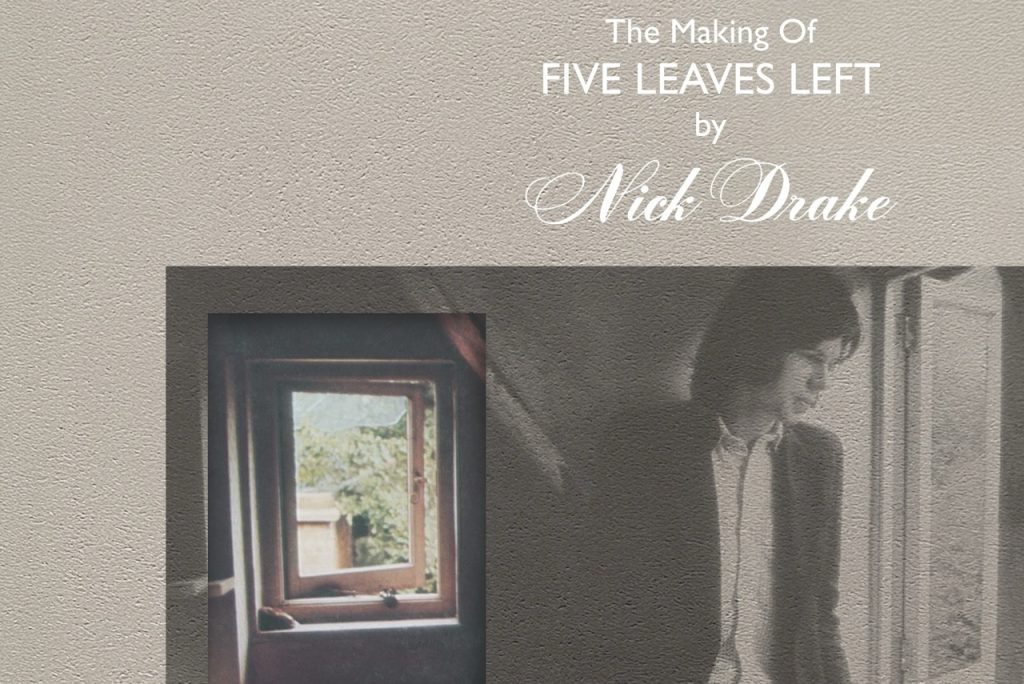 More than just a reissue, this four-disc set rewrites our understanding of Five Leaves Left, revealing the exacting care behind every note.
More than just a reissue, this four-disc set rewrites our understanding of Five Leaves Left, revealing the exacting care behind every note.
Nick Drake’s 1969 debut Five Leaves Left is a hauntingly intimate blend of intricate guitar work, poetic lyricism, and pastoral orchestration that quietly established him as one of folk music’s most influential voices. This status was only truly recognised after his tragic death in 1974 at age 26, when his work was rediscovered by a new generation of fans and musicians.
When I think about my relationship with Nick Drake’s music, it began with childhood exposure through my parents, but truly blossomed around age 15, when my dad gifted me his copy of the Nick Drake Fruit Tree vinyl box set. So when this four-disc collection arrived – four versions of Five Leaves Left, three of which are previously unheard demos, alternate takes and sessions from various periods – I was both excited and apprehensive about what it might reveal.
The journey to assemble these tapes stretched over nearly a decade, thanks to Cally Callomon’s perseverance in tracking down recordings scattered across Island Records’ and later Universal’s archives. When Universal took over (Island was sold to PolyGram in 1989, which was then acquired by Universal), they finally organised their tape library, hiring someone to go through every single Nick Drake tape, listen to it, and document what was on it. Initially, Callomon was only interested archaeologically, but after releasing the posthumous Family Tree in 2007, he saw potential for revealing an origin story when new tapes were discovered, including one donated by Beverley Martyn (wife of John Martyn). As Callomon explains: “With the intrepid and fastidious unearthing of the Five Leaves Left tapes, together with recent discoveries… we came to feel that the time had come to tell the story”.
What emerges from this collection is a portrait of Nick Drake that offers insight into him as a musician and composer without demystifying him. The tracks included are so varied in form that the recording fidelity alters wildly depending on how, where and why each was recorded. The tracks recorded at Cambridge in 1968 (when Drake was just 19) are very low fidelity, recorded into some tape box, featuring input distortion, tape hiss, and pitch flutters. But the fidelity of some of these recordings is hauntingly beautiful and really feels like taking a trip back in time to when this was made. The more dusty tracks offers a delicate atmosphere and feeds into the premise that we are peeling back layers of time and context. The songs often contain a preamble by Drake, who comments that the tape is “a rather unprofessional tape altogether” – a very humble comment, but it makes sense considering his age and experience at the time. For the listener, you’re getting the fuller picture of a young adult trying to form his first work. Hearing him play other parts that are meant for other instruments by either humming or on his guitar is not only great to listen to as a musical experience, but it also makes it evident that Drake had vivid and clear notions of how these tracks were meant to be created.
From a guitarist’s perspective, having tried (and often failed) to learn Drake’s arrangements, it’s fascinating but also obvious to hear that even in early versions or alternate takes, a lot of his guitar playing – particularly his rhythm and accents – is no accident or improvisational flourishes. They are deeply baked into the songwriting, as most of these complex rhythms and accents are so consistent among takes. Alternate takes of Cello Song (early versions titled Strange Face) show this perfectly. There’s also the absolute treat of hearing Drake hum the cello part on this song. River Man Take 1, features just Drake on guitar and double bass, while Day Is Done appears in different forms, from Richard Hewson’s more conventional orchestral arrangement that Drake rejected to the intimate Cambridge version where he talks through his vision for the song. These versions are interesting because you’re able to hear the strength of the songs without the added depth of the now iconic orchestration by Robert Kirby. This allows for a vaguely interactive listen, picking and choosing which version of the song you want to listen to and with which instruments, and then comparing and contrasting for yourself.
There are a few songs that pop up here that didn’t end up on the officially released version: Blossom, Mickey’s Tune, Mayfair, and Made to Love Magic. Blossom appears as a fully-formed composition that Drake himself described as “at least a little ‘corny'”, though it’s a tender, pastoral piece that wouldn’t have sounded out of place on the album. Mickey’s Tune remains mysterious – a whimsical piece that Drake introduces with a small laugh on the Cambridge recordings. Mayfair is particularly intriguing as it was the very first song Drake recorded at his initial Sound Techniques session in March 1968, with Drake worrying it sounded “possibly too Kinks-like”. The track Made to Love Magic is a wonderful treat, as it appeared on the posthumous album Made to Love Magic in 2004 as the track called Magic. The original version here sounds different from the sped-up, re-orchestrated version that became the single, showing Drake’s original vision for what he described as needing to sound “celestial”.
I’m happy to say that this project succeeds in peeling back the curtain just enough so that newfound appreciation can still be made from an album made 55 years ago. I came out of this experience with newfound excitement for the album – that hasn’t made me love the original any more per se (I don’t think this is possible, it is one of my favourites of all time), but has made me appreciate its creator a lot more. Nick Drake has and always will be a somewhat mysterious figure in music, and despite this release showcasing Drake’s process, it still leaves the listener to enjoy the mysterious beauty of his music. That balance – revealing enough to deepen appreciation while preserving the essential mystery that makes his music so compelling – is what makes The Making of Five Leaves Left an enjoyable and respectful re-release. If you’ve picked up this box set on CD or vinyl, but want to upgrade your listening experience, don’t hesitate to check out the great deals on Hi-Fi on the Richer Sounds website, or better yet, contact your local store.
Author: Elliot, Holborn Store







